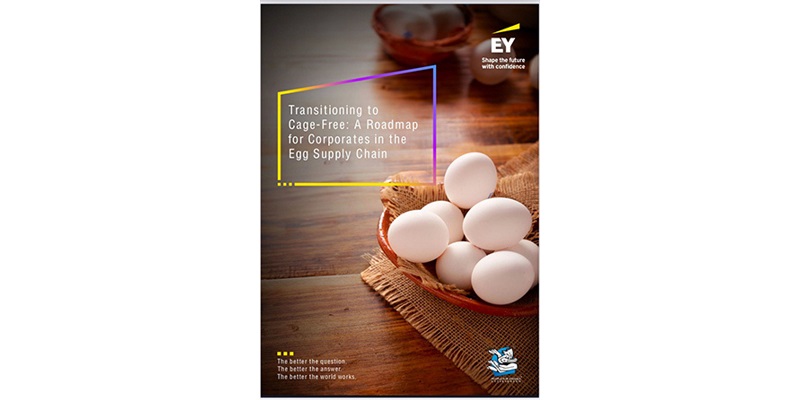Business
10 Interesting Facts About Business During the Great Depression
The Great Depression was a defining moment in global economic history, marked by unprecedented challenges and unexpected resilience. While it brought economic turmoil, the era also showcased the ingenuity and determination of businesses that adapted to the harsh realities of the time. Here, we uncover 10 fascinating facts about business during the Great Depression, revealing surprising insights into innovation, survival strategies, and enduring success stories.
The Great Depression: A Transformative Era for Businesses
The Great Depression (1929–1939) was one of the darkest periods in modern history, with widespread unemployment, plummeting stock markets, and shuttered companies. Yet, amidst the hardship, some businesses thrived, and others laid the foundation for future success. Understanding these stories sheds light on how resilience and adaptability can prevail in the toughest times.
Businesses That Started During the Great Depression
Surprisingly, the Great Depression was a breeding ground for innovation. Many companies we know today began during this era, including:
- Disney: Walt Disney released “Snow White and the Seven Dwarfs” in 1937, proving that entertainment could flourish even in economic downturns.
- Krispy Kreme: This beloved doughnut chain began in 1937 in North Carolina, catering to the comfort-food cravings of the time.
These businesses exemplify how necessity and creativity sparked opportunities amidst despair.
Consumer Spending Didn’t Completely Vanish
While consumer spending plummeted, certain industries saw consistent demand. For instance:
- Cosmetics and Beauty Products: The “Lipstick Effect” describes how consumers still splurge on small indulgences during recessions, and this trend was apparent in the Great Depression.
- Entertainment: Affordable forms of entertainment, like movies and board games, experienced a boom.
The Birth of Monopoly: An Iconic Board Game
One of the most surprising stories from the Great Depression is the rise of Monopoly. Charles Darrow popularized the game in 1935, offering families a form of escapism and fun during tough times. Monopoly’s success highlighted how entertainment provided solace in a bleak era.
The Rise of Thrift and DIY Culture
The economic hardship of the Great Depression forced businesses to adapt to consumers’ reduced purchasing power. Thrift stores became popular, and the DIY culture flourished. Companies pivoted to selling cost-effective or multipurpose products to cater to budget-conscious households.
The Role of Advertising in Keeping Businesses Afloat
Despite financial constraints, advertising became a critical tool for companies to stay visible and relevant. Brands like Procter & Gamble pioneered radio soap operas as a creative way to connect with audiences, giving rise to the term “soap operas.”
Bank Failures and the Business of Survival
The banking sector was one of the hardest-hit industries during the Great Depression, with over 9,000 banks failing. This collapse reshaped how businesses and individuals managed their finances. In response, new financial safeguards, like the Federal Deposit Insurance Corporation (FDIC), emerged, restoring trust in the banking system.
New Deal Programs Boosted Small Businesses
President Franklin D. Roosevelt’s New Deal introduced programs that indirectly benefited struggling businesses. Initiatives like the Works Progress Administration (WPA) and Civilian Conservation Corps (CCC) provided employment, which increased consumer purchasing power and stimulated local economies.
Luxury Goods Survived in Unexpected Ways
While many might assume luxury goods industries suffered heavily, some segments thrived by shifting focus. For instance:
- High-End Jewelry: Companies like Tiffany & Co. adjusted their marketing strategies to appeal to emotional purchases, like engagement rings, as symbols of hope and love.
- Alcohol: Despite Prohibition (which ended in 1933), alcohol sales surged post-repeal, benefiting businesses ready to meet the pent-up demand.
Infrastructure Projects Created New Opportunities
The Great Depression spurred large-scale infrastructure projects funded by the government, including the Hoover Dam and the Golden Gate Bridge. These projects not only provided jobs but also created opportunities for businesses supplying materials and services.
Businesses Adapted to Changing Consumer Preferences
Companies that succeeded during the Great Depression often pivoted their products or services to align with consumer needs. For example:
- Automotive Companies: Instead of selling new cars, manufacturers focused on spare parts and repairs, catering to customers keeping older vehicles running.
- Retailers: Department stores introduced layaway plans, allowing customers to purchase goods over time without accumulating debt.
Lessons for Modern Businesses
The resilience of businesses during the Great Depression offers timeless lessons:
- Innovation is Key: Companies that embraced change thrived.
- Empathy Wins: Brands that connected with consumers’ emotions built lasting loyalty.
- Diversification Matters: Businesses that expanded their offerings to meet shifting demands weathered the storm better.
Conclusion
The Great Depression was a crucible for innovation, resilience, and strategic adaptability. While the era presented immense challenges, it also unveiled opportunities for businesses willing to think differently and connect with the evolving needs of their customers. Today’s entrepreneurs can draw inspiration from these remarkable stories, proving that even in the darkest times, perseverance and creativity pave the way for success.
Business
BPL Medical Technologies announces leadership changes

Bengaluru, India April 23 – BPL Medical Technologies Pvt. Ltd., one of India’s leading medical devices companies, announces key leadership changes as a part of its strategic growth initiatives. Mr. Sunil Khurana has been promoted to Executive Chairman from his former role as the company’s CEO & MD. Dr. Shravan Subramanyam assumes the role of MD of BPL MedTech & Group CEO of Claypond Capital invested MedTech platform. Mr. Guruswamy K, COO of BPL MedTech, will take over as the CEO of BPL Medical Technologies – effective April 01, 2025.
Mr. Sunil Khurana, the founding CEO & MD of BPL Medical Technologies, has played a crucial role in building the company into one of India’s most trusted medical device brands since its launch in 2013. Driven by the vision to make BPL MedTech a significant global exporter of medical devices, he led the company in establishing its second state-of-the-art manufacturing facility in Bengaluru – largely focusing on expanding the manufacturing capacity of X-ray range of equipment and other essential medical devices.
Mr. Khurana now transitions to the position of the Executive Chairman, with focus on guiding the strategic direction of the company, overseeing key decisions at the board level, helping the organisation achieve financial goals, and mentoring the senior leadership to ensure the company’s alignment with the long-term vision.
“I am incredibly proud of our journey so far,” said Mr. Khurana. “With such a strong leadership team, I am more confident than ever that BPL Medical Technologies will continue its growth path. I look forward to working closely with the team, aligning our synergies, and continuing to shape the future of healthcare in India and Global market.”
Dr. Shravan Subramanyam joins as the Managing Director of BPL MedTech & Group CEO of Claypond Capital invested MedTech companies. A third-generation physician from Madras Medical College, Dr. Subramanyam has over 20 years of experience in the healthcare sector, including leadership roles at Wipro-GE Healthcare, Roche, and Novartis. He has also led strategic initiatives at Premji Invest and Claypond Capital.
Dr. Subramanyam will take the reins from Mr. Khurana and lead BPL MedTech into its next phase of growth – BPL 2.0.
Expressing enthusiasm for his new role, Dr Subramanyam said, “I’m looking forward to working closely with Sunil Khurana, Executive Chairman and Guruswamy K MBE, CEO, in their new roles, along with the senior leadership team at BPL Medical Technologies. Together, we will continue to drive BPL’s mission of improving lives through cutting-edge medical technologies and solutions.”
Mr. Guruswamy Krishnamoorthy brings with him over 32 years of experience in the medical device industry. In 2017, he joined BPL MedTech where he initially led the international and strategic business initiatives. He was sent on a special assignment to Penlon as Director- Sales & was promoted to the CEO of Penlon Ltd., a former BPL MedTech-invested company based in the UK. Notably, during his role as Penlon’s CEO, he received the title of “Honorary Member of the Order of the British Empire (MBE)” from Queen Elizabeth II for successfully addressing the challenges posed due to the COVID-19 pandemic, including the launch of an innovative emergency ventilator for the UK market.
As the new CEO, Mr. Guruswamy K will manage all operations and continue to implement the strategic vision established by the former CEO.
“I am honoured to assume the role of CEO of BPL Medical Technologies,” he said. “I share the same passion for the potential and opportunities for this great organisation, and I am excited to work with our incredible team in this journey ahead to take BPL Medical Technologies to newer heights.”
BPL Medical Technologies remains committed to its mission of delivering cutting-edge MedTech solutions to empower healthcare professionals in India as well as globally.
ABOUT BPL MEDICAL TECHNOLOGIES
BPL Medical Technologies Pvt. Ltd. is one of India’s leading medical technology solutions providers, specializing in the development, manufacturing, and distribution of medical equipment across Cardiology, Critical Care & Surgery, Imaging, Mother & Child Care, Home Care, and Consumables & Accessories. In 2013, the company was carved out of BPL Limited as a medical devices business division through a business transfer. The company has its registered head office in Bengaluru, India, along with 14 branch offices across India, dedicated customer support teams, and a network of over 600 professionals located in the farthest corners of the country. The company has a large team of R&D that strives to design and develop medical devices as per the latest product features and offerings. BMTPL products are manufactured at its ISO-certified manufacturing facilities located in Palakkad and Bengaluru – a new manufacturing facility under the PLI initiative driven by the GOI, and was inaugurated by Hon’ble PM of India, Shri Narendra Modi on Oct 29, 2024. Both our facilities conform to the highest standards of quality and best practices.
Business
EY and People for Animals Uttarakhand launch a Cage-Free Implementation Guide to Assist Corporations in Ethical Cage-free Egg Sourcing

Global corporate commitments to ethical sourcing are gaining momentum, with over 2,600 multinational companies pledging to transition to cage-free eggs, acknowledging the inherent cruelty of confining hens in cramped cages. However, despite these commitments, many corporations face challenges in implementing cage-free sourcing within their supply chains.
To address this gap, EY and People for Animals-Public Policy Foundation (PFAPPF) have launched the Cage-Free Implementation Guide, a first-of-its-kind resource to help institutional consumers navigate the transition to cage-free egg procurement. The guide provides businesses with practical steps to streamline supply chain adjustments, manage pricing concerns, and meet their animal welfare commitments effectively.
Speaking on the launch Ravi Ruparel, Partner, Sustainability, EY India said, “A successful transition to cage-free operations unlocks a multitude of benefits and opportunities that extend beyond animal welfare. Businesses can enhance operational efficiency, improve supply chain stability, and enhance brand reputation through increased trust amongst consumers. Moreover, cage-free practices align with the evolving market values and business standards, aiding businesses to achieve sustainability goals. Additionally, this shift, with its various benefits, drives innovation and compliance with emerging standards, ultimately contributing to more sustainable and responsible business practices” Speaking on the launch, Priyanka Bangari, Managing Director of People for Animals Uttarakhand and Trustee at PFAPPF, said: “When we spoke with institutional consumers, they expressed a strong intent to transition to cage-free eggs but often struggled with the practicalities–especially supply chain alignment.
This guide was born from those conversations. By collaborating with EY, we have created a resource that can potentially help corporations turn their commitments into tangible action, ensuring hens are no longer confined in cages. “As businesses worldwide face increasing scrutiny on ethical sourcing, the Cage-Free Implementation Guide is expected to be a crucial tool for companies looking to uphold their commitments while ensuring operational feasibility.
About EY
EY exists to build a better working world, helping create long-term value for clients, people, and society and build trust in the capital markets.
Enabled by data and technology, diverse EY teams in over 150 countries provide trust through assurance and help clients grow, transform and operate.
Working across assurance, consulting, law, strategy, tax and transactions, EY teams ask better questions to find new answers for the complex issues facing our world today. EY refers to the global organization, and may refer to one or more, of the member firms of Ernst “Young Global Limited, each of which is a separate legal entity. Ernst & Young Global Limited, a UK company limited by guarantee, does not provide services to clients. Information about how EY collects and uses personal data and a description of the rights individuals have under data protection legislation are available via ey.com/privacy. EY member firms do not practice law where prohibited by local laws. For more information about our organization, please visit ey.com.
This news release has been issued by EYGM Limited, a member of the global EY organization that also does not provide any services to clients.
Business
PalTech Continues Its Streak as a Great Place to Work

Hyderabad (Telangana) [India]/Delaware [US]: PalTech has once again been recognized as a Great Place to Work®, a certification grounded in direct feedback from employees and a testament to the company’s ongoing commitment to a people-first culture.
The Great Place to Work nod carries weight because it measures trust, camaraderie, fairness, pride, and the kind of environment that drives both professional growth and business success.
PalTech’s continued recognition suggests they are doing something right.
“We spent years building an environment where people feel safe asking tough questions and tackling bigger challenges. This certification is the byproduct.”
– Shanthi Reddy, PalTech’s Co-Founder.
Engaged employees consistently deliver stronger customer service, higher productivity, and better ideas. When employees feel supported and trusted, they are more willing to propose creative fixes for client problems.
“Clients see the difference,” says Abhishek Pathak, Delivery Head at PalTech. “They don’t just get a project team; they get a group of people who act like co-investors in the outcome. That’s what a healthy culture can spark.”
A Culture Built on Real Conversations and Care
Walk into many modern offices, and you might see artisan coffee machines, cozy nooks for napping, or on-site yoga classes. These perks are great–but they don’t guarantee a vibrant culture. PalTech offers both. With their move to a new and improved location in Hyderabad, employees now have the infrastructure and space to collaborate, innovate, and grow.
But their real focus remains on career development, skill-building, and fostering meaningful connections among teams.
* 92% of PalTech employees say they take pride in their work, driven by the opportunity to work with cutting-edge technology on high-impact projects.
* 91% highlight the learning and upskilling opportunities as a key advantage.
* 98% recognize PalTech’s dedication to innovation and challenging projects.
* Employee Retention: PalTech’s attrition rate sits notably below the tech-industry average.
* Client Satisfaction: Client retention and cross-selling rates have inched upward annually.
* Innovation Pipeline: Idea submissions in PalTech’s internal hackathons grew by 40% year-over-year, according to Raghav Kandanelly, Head of the Center of Excellence (COE).
PalTech’s culture of continuous learning and innovation was recently on display in its AI & Automation Challenge, which concluded with impressive participation and groundbreaking ideas. Over 30 teams submitted concepts focused on simplifying workflows, enhancing user experience, and automating complex processes. The competition saw innovations like GenAI-powered tools, personalized AI tutors, and cloud infrastructure accelerators.
“The energy we saw during the challenge reflects the kind of mindset we foster here–curiosity, bold thinking, and a drive to solve real-world problems with technology,” said Raghav Kandanelly, COE Head.
Balancing Autonomy and Accountability
One of the trickiest aspects of fostering a high-trust environment is ensuring results still matter. PalTech tries to strike a balance: employees are given enough autonomy to experiment and make mistakes.
“We’re not a free-for-all,” Abhishek Pathak clarifies. “We believe in setting goals that push us. But we also want to give people the freedom to figure out how they’ll reach those goals instead of micromanaging them.”
For PalTech, this Great Place to Work certification isn’t about chasing accolades; it’s about staying true to its core values as the company grows.
“Every new person who joins will add something new to our DNA,” says Shyam Palreddy, the company’s Founder. “We have to integrate those perspectives, keep our standards high, and remain true to our values. That’s our recipe for staying a great place to work–and a great partner for our clients.”
Join the Journey
PalTech is scaling rapidly. Check out www.pal.tech for career opportunities where your passion can drive meaningful impact.
Media Contact
Email: marketing@pal.tech
About PalTech
PalTech is a global IT consulting firm specializing in Digital Transformation, AI, Cloud & DevOps, Data Science & Analytics, and Business Automation. For over a decade, PalTech has helped organizations worldwide innovate and accelerate growth with cutting-edge technology solutions. PalTech is also deeply committed to giving back, with ongoing charitable initiatives that support local communities and drive social impact. Learn more at www.pal.tech.
-

 Health4 months ago
Health4 months agoHow to Create a Personalized Self-Care Plan
-

 News4 months ago
News4 months agoMeta India Apologises for Zuckerberg’s Remark on India Elections; Nishikant Dubey Says Issue Is ‘Closed’
-

 News4 months ago
News4 months agoDrunk Official’s Car Kills Minor Girl, Injures Two in Uttarakhand
-

 Press Release3 months ago
Press Release3 months agoSportingTwist: Ushering A New Era for Sports Platform
-

 Press Release4 months ago
Press Release4 months agoJakarta Murugan Temple: A New Spiritual Landmark for Unity and Heritage Marking the Maha Kumbhabhishekam Ceremony on 2 February 2025
-

 Sports4 months ago
Sports4 months agoHow Climate Change is Affecting Outdoor Sports: A Comprehensive Analysis
-

 Health4 months ago
Health4 months agoTop 5 Annual Health Screenings Everyone Should Consider
-

 Press Release3 months ago
Press Release3 months agoTula Hospital has received significant investment from Dr. Amit Mann




